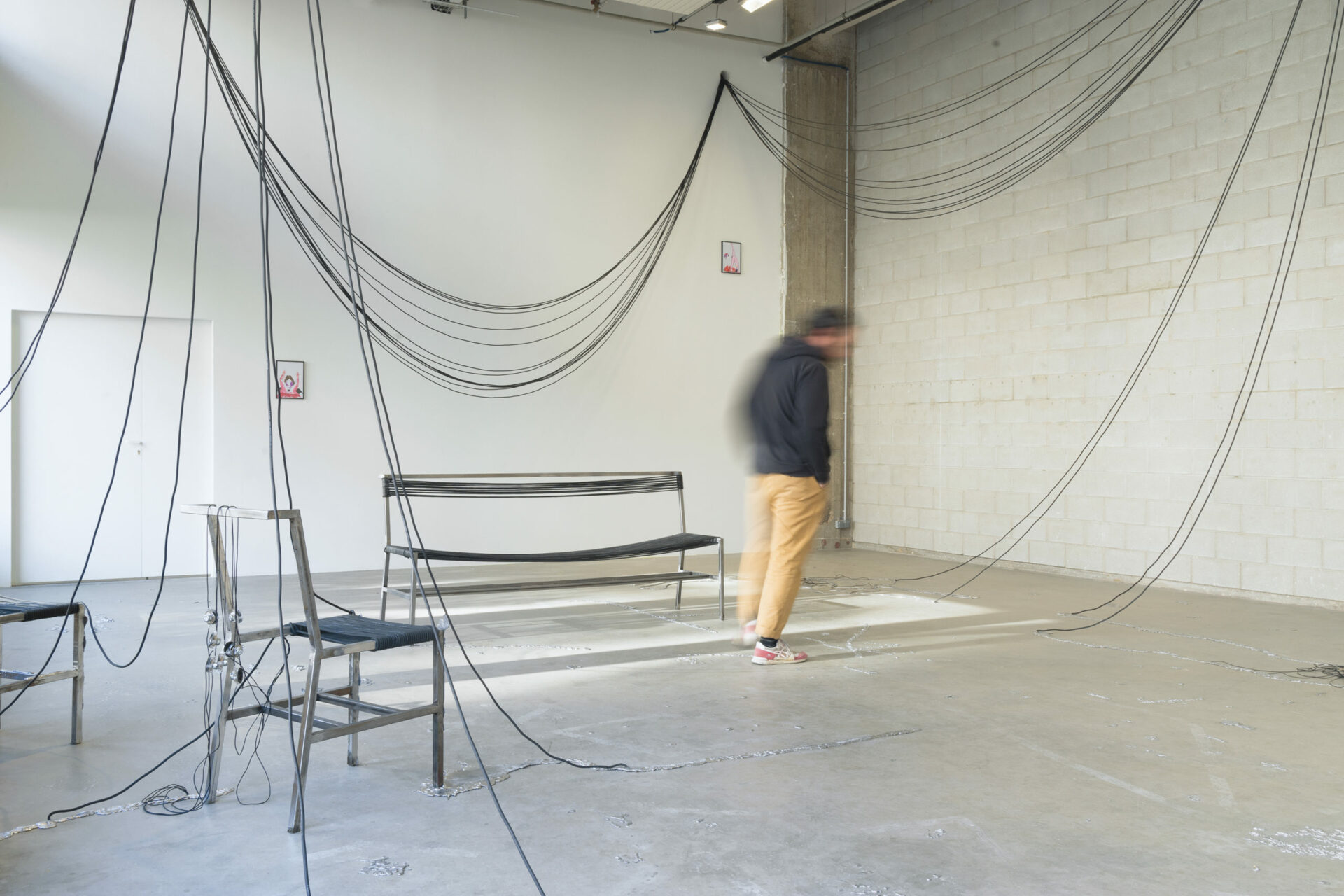Annie MacDonell
Originality and the Avant Garde (On Art and Repetition)
January 20 – March 10, 2012

Photo : Toni Hafkenscheid
[En anglais]
In Camera Lucida, his lyrical, book-length study of the affective powers of the medium, Roland Barthes proposed that, “more than other arts, photography offers an immediate presence to the world — a co-presence.” This immediacy of photographic inscription, its ability to conjoin two otherwise separate times and spaces, is a fitting introduction to Annie MacDonell’s multimedia installation that considers the camera’s uncanny ability to mirror and transpose the external world.
MacDonell’s exhibition is a nod to the ways in which photography has challenged the ideal of artistic originality in the gallery and museum, borrowing its title from art critic Rosalind Krauss’ 1981 article that critiqued narratives of artistic innovation in the history of modern art. In the five framed images that open the installation, MacDonell makes her historical sources of inspiration explicit, presenting groupings of found photographs culled from the Toronto Reference Library’s Picture Collection for their depiction of reflective surfaces, either in the form of mirrors or reflective pools of water. Doubles and inverted images abound in these photographs; in one, a swanky living room interior and two decorative mirrors have even been positioned to face one another, creating an endless mise en abyme where it is impossible to identify the original object of reflection. This doubling effect is reinforced through MacDonell’s presentation: the found images are associatively grouped and taped onto her studio wall, then re-photographed for presentation in the gallery, where they are spotlit by two oversized lights. Here, MacDonell uses photography’s transportive possibilities to bring the space of research and production (the library, her studio) into the space of display (the gallery) as a kind of allegory about what it means to make images in an era of photographic saturation.
Across from the framed photographs, a giant camera obscura, covered in mirrored plexiglas, serves as another mechanism for artistic self-reflexivity. Built to the exact dimensions of MacDonell’s studio space, the structure houses a video projection showing a male actor, dressed in a wool suit, who delivers his theoretical musings about originality and repetition. Between the looping video clips, ghostly, upside-down versions of the found photographs on the outside of the structure are projected onto the screen by the camera obscura’s lens. Through its transposing of inside and outside space, MacDonell’s mirrored camera positions us as both the object of its gaze and its viewer, confusing the acts of framing and being framed, looking and being watched.
Staging so much self-reflection runs the risk of making work that is insular, a kind of artistic “inside joke” that seems to leave the viewer out of the fun. But in MacDonell’s installation, the sense of having seen these scenarios before is exactly the point, reminding us of the enduring impact of photographic repetition.




